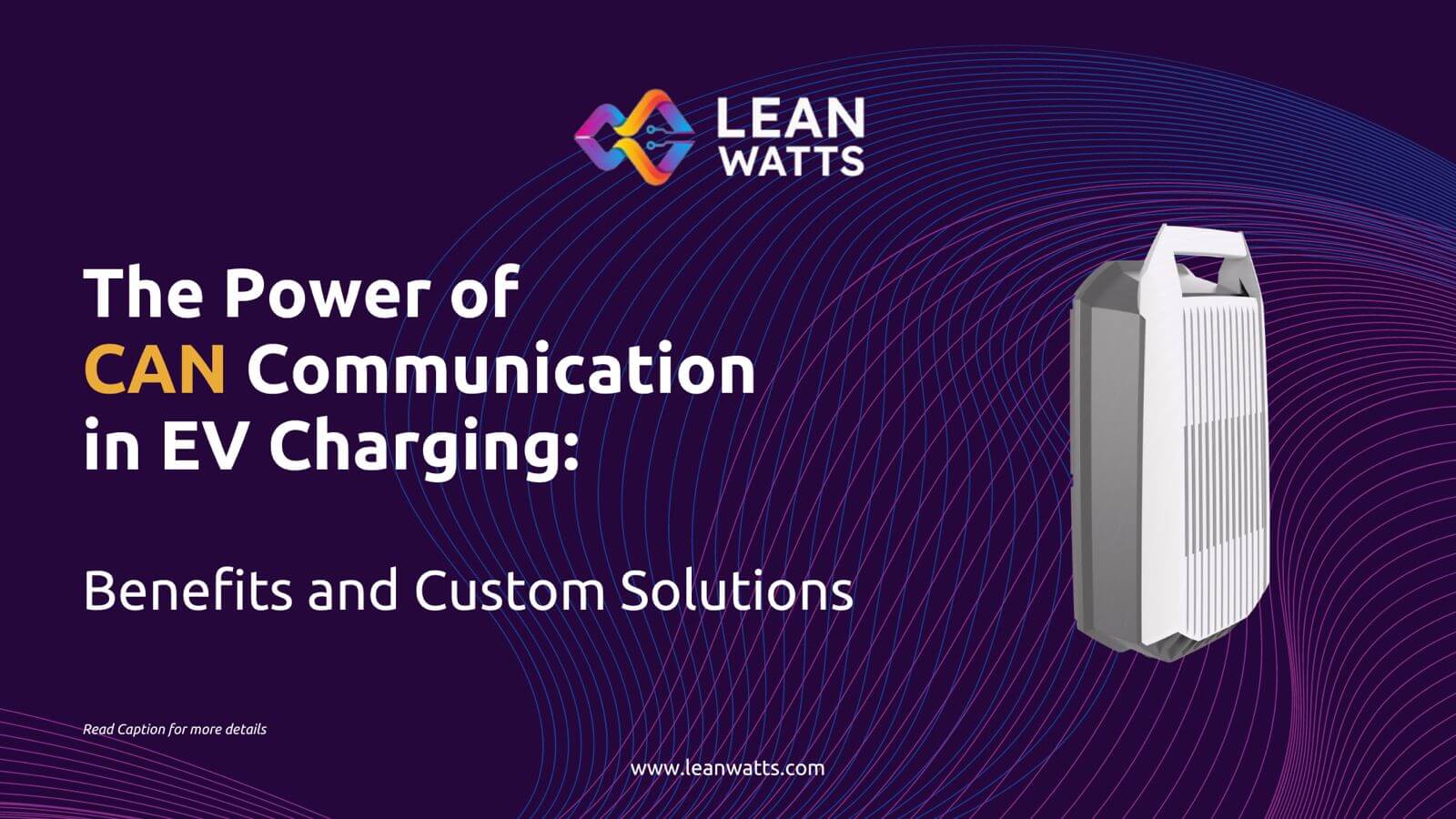
As electric vehicles (EVs) become more prevalent, the technology that powers their charging systems must advance accordingly.
One crucial element of this technology is CAN (Controller Area Network) communication, which ensures real-time monitoring and adjustment of charging parameters for safe power delivery in both AC and DC chargers. Along with CAN, several other communication protocols are essential for modern EV charging:
- ISO 15118: Enables seamless plug-and-charge experiences by facilitating automatic authentication between the EV and charging station.
- CHAdeMO: A global standard for fast DC charging, commonly used in Japan and compatible with many EV models worldwide.
- IEC 61851: The international standard for AC charging in India, ensuring safe and efficient communication between the charger and the EV.
- GB/T: The dominant standard for DC fast charging in India, designed for high power delivery.
- OCPP (Open Charge Point Protocol): Widely used for managing public charging stations, allowing networked communication between charging points and central systems.
What is CAN Communication?
CAN communication, or Controller Area Network, is a robust protocol designed to facilitate the efficient exchange of data between various components in a system. Originally developed by Bosch in the 1980s for automotive applications, CAN communication has since become an integral part of many other systems, including EV charging.
In the context of EV charging, CAN communication allows different components – such as the charger, the vehicle’s battery management system, and other electronic systems – to share information and work together seamlessly. This capability is crucial for maintaining the performance, safety, and efficiency of EV charging systems.
Key Benefits of CAN Communication in EV Charging
1. Reliability
For EVs, this means that communication between the charger and the vehicle remains consistent and accurate, ensuring that charging operations are executed correctly every time.
This reliability is particularly important in public charging stations where various vehicles and chargers interact. CAN ensures that data is transmitted accurately, reducing the risk of errors and enhancing the overall user experience.
2. Speed
With high-speed data transmission capabilities, CAN enables quick and efficient exchange of information between the charger and the EV. Real time exchange allows the charger to promptly adapt to the vehicle’s needs, adjusting parameters such as voltage and current.
The battery’s condition changes during charging and CAN communication adjusts the power output dynamically and ensures it is charged as quickly as possible within safety limits.
For instance, a DC charger can use CAN communication to assess the state of charge in an electric 3-wheeler. If the battery is almost fully charged, the charger will switch from constant current to constant voltage mode. Meanwhile, it monitors temperature data to ensure the battery doesn’t overheat. It also detects faults such as a short circuit, overvoltage for the charger to either adjust or stop the charging process preventing damage.
This responsiveness helps optimise the charging process, reducing wait times and improving the efficiency of each charging session.
3. Cost efficiency
In Low voltage chargers, CAN communication facilitates charging the smaller battery packs efficiently, reducing energy wastage.
This is crucial important for commercial fleets (such as e-rickshaws) that require fast, reliable, and cost-effective charging
4. Scalability
CAN communication provides excellent scalability, allowing for easy integration of additional components and features without requiring major reconfigurations.
This means as new technologies are introduced, CAN can accommodate these changes smoothly. Also, CAN communication ensures interoperability – a DC charger can work seamlessly with different 2-wheeler and 3-wheeler EVs, regardless of their manufacturer
Custom Solutions from Leanwatts
To fully leverage these advantages, customisation is key. That’s where Leanwatts comes into play.
Leanwatts specialises in providing tailored solutions to maximise the benefits of CAN communication in your EV charging systems. Here’s how we can assist:
- Custom Integration: We work closely with you to integrate CAN communication seamlessly into your existing or new charging systems. This ensures compatibility with your current setup and optimises performance.
- Optimised Performance: Our expertise allows us to fine-tune the CAN communication setup to meet your specific requirements. This includes adjusting parameters to enhance both speed and efficiency, ensuring that your charging systems operate at their best.
- Future-Proof Solutions: As the EV landscape continues to evolve, we provide solutions that are scalable and adaptable.
By choosing Leanwatts , you’re investing in a solution that enhances your charging needs and prepares it for the future. To know more about solutions visit our website to book a meeting with us
